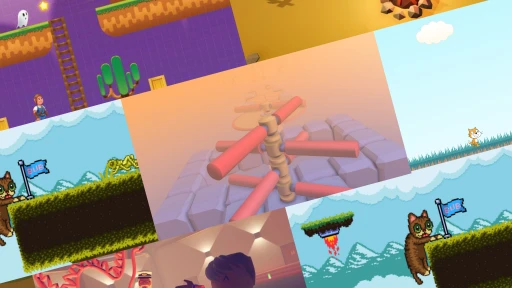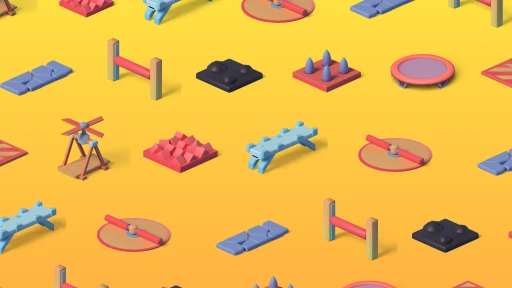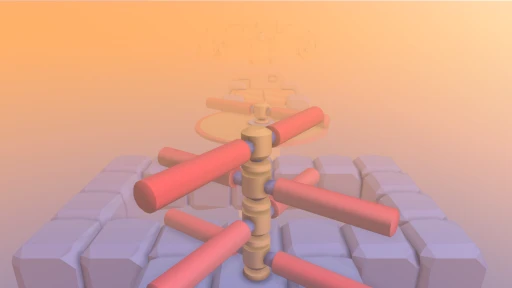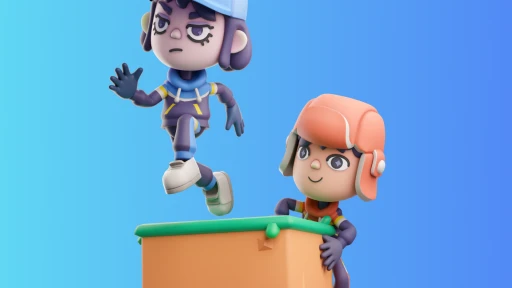As simple as an idea may seem on paper, actualizing it into a game is incredibly
complex, often resulting in significant changes along the way. That’s why a testament to an exceptional game lies in
both the idea and the implementation, testing, and refinement of said idea.
Not many big ideas turn out exactly how they’re written out, as playtesting brings many new ideas. Through the testing
process, unforeseen bugs or errors, termed 'edge cases,’ tend to emerge, adding complexity to the project.
This is why continuous testing forms the core of any successful game development process . Not to mention, each
update brings the possibility of bugs to your game.
Understanding the cycle of testing, breaking, and refining is a fundamental part of game development. So, let's break
down each part.
Improving the game through playtesting
A game's visual allure is not a prerequisite for playtesting. In fact, the earlier you can get your unfinished game into
players' hands, the better. Even if you believe you've anticipated every player's reaction, real-life testing can unveil
surprise insights and inspire fresh ideas to enhance your game.
During the playtest, simply observe the players, refraining from intervening or providing additional guidance. The
natural interaction of the player with your game can provide authentic feedback that you won't get the opportunity to influence once your game is released.
Pay attention to the players' feedback and record bugs, potential improvements, and other changes. Sorting these notes
by their relevance and impact on your game helps prioritize which points to tackle first.
This cycle of testing and improvement, known as "iteration," is a continuous loop that occurs throughout the
entire game development process. Through persistent iteration, your game evolves, enhancing its appeal and setting it
apart from others.
Making bigger changes
Making big changes can be daunting. You’ve worked so hard to develop your game, but due to a bug or player feedback , you need to make a big change. Don’t let this discourage you.
First, we recommend making a copy or backup of your current game. Backing up your current game version allows for a
safety net, a point of return if things don't pan out, and a reference point to compare with your modified version.
Additionally, it’s important to remember that game development is a dynamic journey filled with constant learning.
Many games have had large sections scrapped or revised because they simply weren't engaging or fun. And this is an
integral part of the creative process and not a sign of failure.
Take your time when making these decisions. You may even opt to complete the current game without major modifications
— it doesn't have to be a masterpiece. Sometimes, it's best to introduce your newly realized ideas in a fresh game.
Through each game you create, you learn and improve, ready to face the next challenge with newfound wisdom and
strategies.
Improving the game through quality assurance
Ever played a game riddled with bugs? It can be a real turnoff. To avoid delivering such a frustrating experience,
perform rigorous testing before you release your game to the world. This critical phase in game development is known as
quality assurance (QA) .
Without exception, every game update should undergo thorough testing. Consider creating a checklist to help ensure you
evaluate every aspect of the game consistently. QA isn't a one-person job, either. Enlist the help of family and friends
to playtest your game. Their unique playstyles and perspectives might reveal issues you hadn't noticed.
However, remember that perfection isn't the goal. Not all bugs need fixing. Your focus should be on major issues that
significantly impact the gameplay. "Showstopper" bugs — those that prevent people from playing or completing
your game — are the top priority and must always be addressed. With a QA process, your game will be well-positioned
for a successful launch.
Polishing the game
You've worked out the kinks, iterated through multiple versions, and your game is in good shape. It's playable,
engaging, and, most importantly, fun. So, what's the next step? It's time to polish.
Polishing a game is like adding the finishing touches to a painting. It's your opportunity to highlight the parts of the
game that shine, smooth out the rough edges, and tuck away the less critical elements.
You might enhance the graphics to make the environments more immersive, refine the sound design to increase the
emotional impact, or tweak the controls to make them more intuitive.
Consider your game a canvas, your playground. This is where you get to truly express your creativity, not just in terms
of gameplay mechanics but in the aesthetic and feel of the game as well.
Whether you're highlighting a stunning visual effect, emphasizing a unique gameplay mechanic, or even hiding an Easter
egg for the most dedicated players to find, polishing is your chance to make your mark. Remember, this game is a
reflection of you as a creator.
Of course, you don’t have to be a multibillion dollar company to run through this process either. Platforms such as
Soba have lowered the barrier of entry significantly. So if you’ve thought of making a game, check out []() Soba and
see how fast you can turn your ideas into reality



